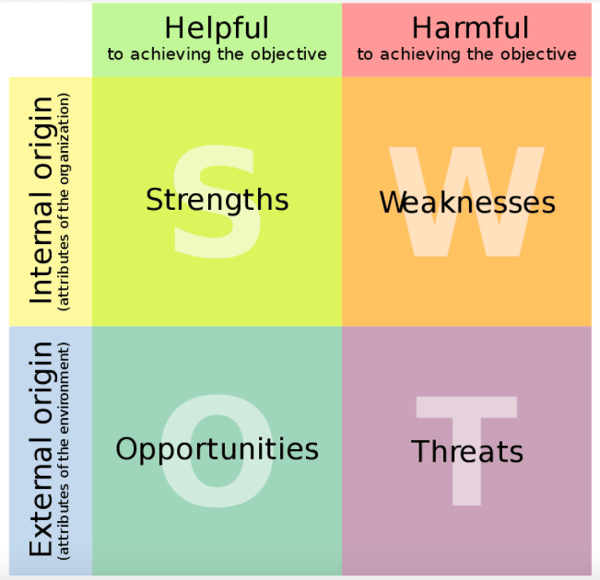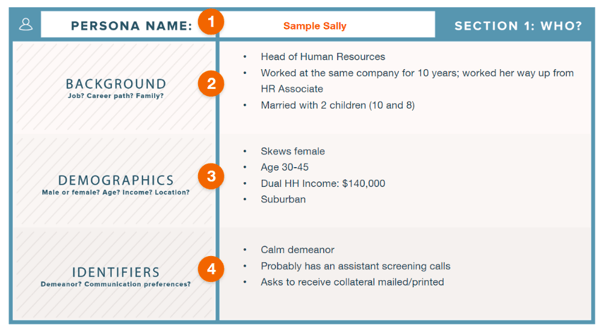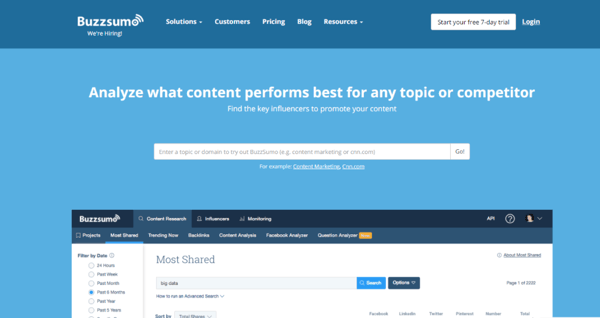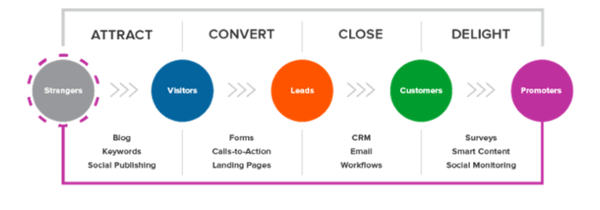
The B2B world is highly competitive. For those companies with a clearly documented online marketing strategy, success is much more attainable. But many B2B companies do not currently have one.
Instead, they try out a variety of marketing tactics with no clear direction. Then, when they fail, they think “this marketing tactic does not work for us”, when in reality it is the lack of strategy that led to the failure — not the activity, itself.
Does this scenario sound familiar?
How can you finally get off this never ending marketing mouse wheel and start achieving your business goals?
You need to build an online marketing strategy.
What follows is an easy-to-understand checklist that includes all the key elements of a successful B2B online marketing strategy. It can be customized to any sized company and will help you build on your strengths while mitigating your weaknesses for maximum effect – and returns.
1.Determine Your Market Position
The best way to determine your market position is to conduct a Strengths, Weaknesses, Opportunities, and Threats analysis.

Strengths:
You’ll want to list the benefits your company offers to your prospective customers. That is, how your business is different than others in the same space? What sets you apart and why would clients choose you over the competition?
Weaknesses:
Some weaknesses could include things like cost of production, difficulty in finding a reliable and fast payment processor, and the fact that you’re new on the scene, for example. Don’t look at these elements as negatives. Instead, allow them to act as a blueprint on how your company can improve.
Opportunities:
Include all the ways your company can break into the space occupied by the competition. Also include the possible partnerships or other business growth strategies that can help your business scale in the future.
Threats:
Include your competition, new technologies that may come on the scene, free tools that may out-price you, and anything else that could shrink your bottom line or snuff out your business.
2. Create Your Buyer Personas
For a B2B marketing campaign to reach maximum effectiveness, the ideal buyer persona should be sketched out and fully understood.
To create and develop a buyer persona, interview your current customers and prospects. Listen in on their social media conversations, and release surveys that will give you more information.
You are encouraged to name your persona. You should list the persona’s annual salary, hobbies, buying habits, likes and dislikes, goals and challenges. You should list the company where the person works and the position they hold, as well as where they live.

Go a step further by creating more than one buyer persona. You might have buyer personas from different industries, or maybe your ideal customers hold different types of positions/job titles.
Creating segmented buy personas can help you target your marketing content, ensuring it always hits its mark.
3. Competitor and Influencer Analysis
Just as you created buyer personas for your ideal buyers, you should create similar profiles for the very companies whose offerings are in direct competition with yours.
In the same vein, search for your ideal influencers — organizations or individuals whose clout could help your marketing efforts.
To assist with your search, use tools like FollowerWonk and BuzzSumo find competitors and influencers on social media.

Look to the strengths portion of your SWOT analysis and see if you can create ways to gain an advantage over your competitors – and get the attention of influencers – using the strong points your company is known for.
4. Use Popular Marketing Methods
In order to get the biggest return on your marketing investment, your resources should be allocated only to those channels that will yield the most leads.
For instance, if you find that most B2B companies use LinkedIn for lead generation, but through research you find that your target market tends to use Twitter the most, you would have wasted your time had you created a LinkedIn-only B2B campaign.
As an outline of what activities to consider for your B2B marketing campaign, here are a few basic suggestions:
Content Marketing
This includes your web copy and blogs, press releases and outreach articles, newsletters, emails, and white papers, etc. — all used together to nurture leads through the buyer journey using the inbound methodology, seen below:

Social Media Marketing
Once you determine the social platforms your target audience uses most, start posting. But don’t just post your own content. Follow the 10-4-1 rule:
- Post 10 items from other third-party sources that are interesting, educational, and valuable to your audience
- Share 4 of your company’s own blog posts to get readers to come to your site for more information
- Post 1 time directing readers to a landing page to generate leads
Search Engine Optimization
Here are a few basic SEO practices you can start implementing right away:
- Keywords: Infuse your keywords into your headlines and first paragraphs, and sprinkle similar keywords throughout (but write naturally and never stuff keywords).
- Mobile-friendliness: Your content must be formatted with short paragraphs that are easy to read. Images and background graphics should be appealing to the eye and your navigation should be intuitive.
- Links: Wherever you can, internally link to your various pages to keep people on your site and consuming your content longer. You should also include links to prominent authority websites.
- Page loading speed: Make sure your site loads quickly - under 2-3 seconds.
Pay-Per-Click Marketing
Pay-Per-Click indicates that you will pay each time a prospect clicks on your ads. For that reason, you’ll want to ensure that you are maximizing each lead.
Ensure the landing pages you use for your PPC ads are relevant, targeted, and useful. If someone clicks on your ad only to be taken to a landing page that describes a totally different offer, your expensive leads are going to bounce.
Instead, make sure your landing pages are a direct continuation of your ads for a seamless experience and to meet customer your prospects’ expectations.
Personalization
There are already many marketing automation tools that can call prospects by name and address them by their role. But you can take personalization a step further by using a platform that enables you to produce dynamic content that changes according to various variables, behaviors, and actions.
5. Establish Clear Goals and Objectives
Each element of your B2B marketing campaigns should be tracked and analyzed. In order to do so, you must have specific objectives for the various marketing channels in play.
For instance, you may wish to reach 200 visitors to your website in one month or 3,000 subscribers to your newsletter this year.
The only way you will be able to gauge the effectiveness of your marketing efforts is by setting clear, specific, and precise benchmarks.
6. Study & Test Your Analytics
Analyze the performance of your marketing campaigns to gain insights and design new marketing initiatives based on the results. You can greatly benefit by performing an analysis in the following areas:
User Behavior: This data will help you understand how prospects behave once they land on your website, receive your email, open your newsletter, or see your social ad in their newsfeeds. Analyzing user behavior can help you further flesh out your buyer personas for even greater marketing effect.
To make analyzing user behavior a simpler affair, use the latest tools, such as ClickTale, which can give you unprecedented insight into the ways visitors interact and engage with your brand.
Website Analytics: This is the amount of traffic that arrives on your site, the length of time visitors spend on each page, how many bounce the moment after they land, and even what devices users are viewing your site on. By analyzing various content marketing KPIs, you can determine ways to improve your online performance over time.
Google Analytics is one of the most popular platforms for web analytics for B2B marketers. Other notable mentions include CrazyEgg and the various social insight tools like the Facebook Pixel.
It is important to interpret and update your strategy based on the data you receive on a monthly and quarterly basis.
7. Have the Right Team in Place
The best strategy in the world will fall flat unless you have the right team to effectively implement the plan. It is crucial to work with marketing experts who can fully enact the plan of attack you need to dominate your market.
Working Towards a Successful B2B Online Marketing Strategy
The smarter move is to hire an experienced B2B marketing team that can help you build a strategy and implement that plan with precision. Doing so would increase your chances of success at reaching your target market and achieving your business goals.
Ready to get started? Contact KeyScouts for both building a successful B2B online marketing strategy and implementing it the right way.








